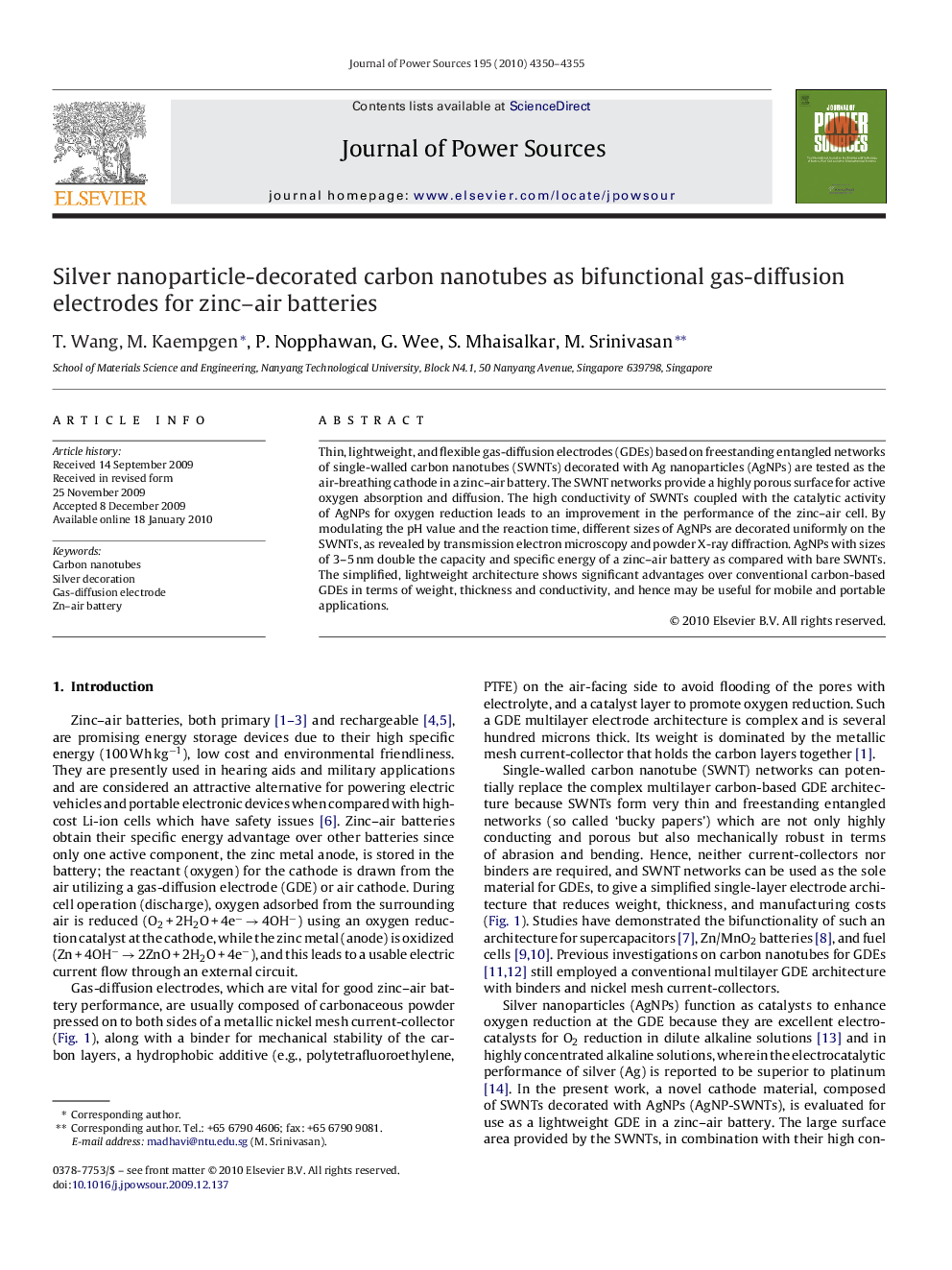| Article ID | Journal | Published Year | Pages | File Type |
|---|---|---|---|---|
| 1290372 | Journal of Power Sources | 2010 | 6 Pages |
Thin, lightweight, and flexible gas-diffusion electrodes (GDEs) based on freestanding entangled networks of single-walled carbon nanotubes (SWNTs) decorated with Ag nanoparticles (AgNPs) are tested as the air-breathing cathode in a zinc–air battery. The SWNT networks provide a highly porous surface for active oxygen absorption and diffusion. The high conductivity of SWNTs coupled with the catalytic activity of AgNPs for oxygen reduction leads to an improvement in the performance of the zinc–air cell. By modulating the pH value and the reaction time, different sizes of AgNPs are decorated uniformly on the SWNTs, as revealed by transmission electron microscopy and powder X-ray diffraction. AgNPs with sizes of 3–5 nm double the capacity and specific energy of a zinc–air battery as compared with bare SWNTs. The simplified, lightweight architecture shows significant advantages over conventional carbon-based GDEs in terms of weight, thickness and conductivity, and hence may be useful for mobile and portable applications.
